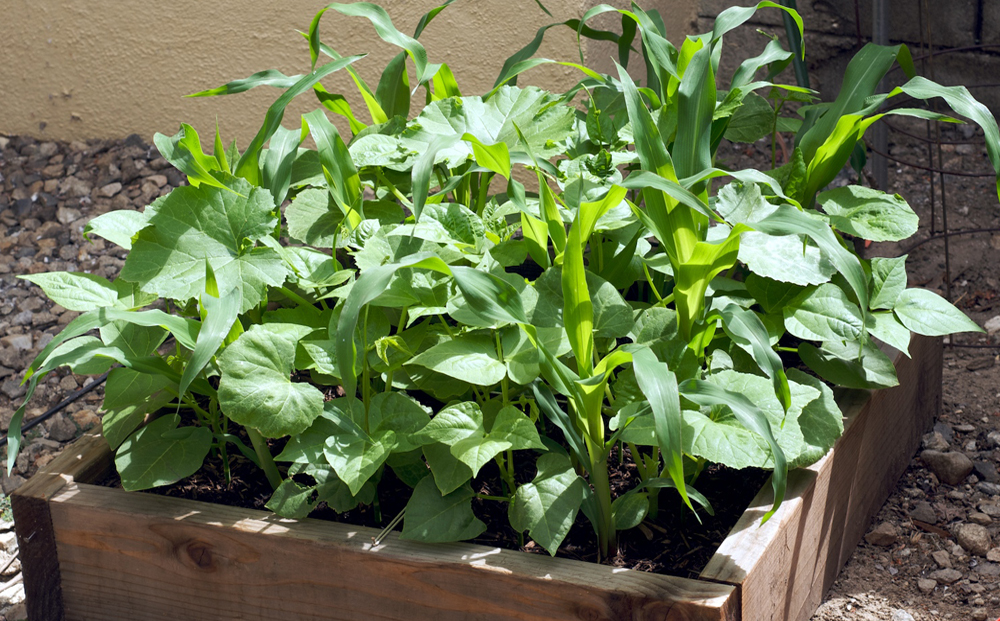school garden center
Theme Gardens
Creating a garden centered around a theme can inspire increased curricular connections and student engagement. Consider the following theme garden ideas and accompanying lesson plans.
Alphabet Garden
Refer to Lois Ehlert's book Eating the Alphabet: Fruits & Vegetables from A to Z and the Plant Part Chart for ideas about edible plants that begin with each letter of the alphabet. How many of these plants can be grown where you live?
Lesson Plan:
Dye Garden
Grow plants that can be used to make dyes, such as onion, red cabbage, sunflowers, alfalfa, and coreopsis. Use the instructions in the Hands on With Wool activity to dye wool and hand-spun yarn.
Lesson Plan:
Founding Farmers Garden
We all know that George Washington and Thomas Jefferson were accomplished political leaders, but did you know that they both considered themselves farmers by profession? Read Peggy Thomas’ books Farmer George Plants a Nation and Thomas Jefferson Grows a Nation to learn more. Create a Founding Farmers Garden by growing some of the same plants that were grown by Washington and Jefferson at Mount Vernon and Monticello. For example, Jefferson experimented with growing vegetables from around the world. He grew squash and broccoli from Italy, figs from France, and peppers from Mexico. He also loved to grow English Peas. Read First Peas to the Table: How Thomas Jefferson Inspired a School Garden to learn about his pea-growing contest. At Mount Vernon, Washington experimented with plants such as barley, corn, cabbage, carrots, peas, potatoes, pumpkins, and turnips.
Lesson Plan:
Gregor Mendel Garden
Gregor Mendel was fascinated with plants and was curious about why some pea plants had different physical characteristics than others. For more than ten years, Mendel carried out thousands of experiments on pea plants that laid the foundation for the study of heredity. Grow a variety of garden peas to compare the different traits that are expressed.
Lesson Plan:
Literature Inspired Garden
Consider growing a garden from a favorite children's book, such as The Little Red Hen or Peter Rabbit.
Lesson Plan:
- A Garden Plot: The Tale of Peter Rabbit
- Growing Plants in Science and Literature: More Than an Empty Pot
- Little Red Hen
- Pancakes!
Pizza Garden
Create a pizza-shaped garden and grow the different ingredients in the “slices.” Plant tomatoes, wheat, basil, garlic, onions, mushrooms, peppers, and other favorite pizza toppings.
Lesson Plan:
Pollinator Garden
Grow plants that attract pollinators through a diversity of nectar and pollen sources. Refer to pollinator.org for a guide to selecting plants for native pollinators in your region.
Lesson Plan:
Pumpkin Patch
If your school has the room, plant a pumpkin patch. Read the book How Many Seeds in a Pumpkin? for inspiration about how your students can use the pumpkins they harvest as learning tools.
Lesson Plan:
Sunflower Garden
Sunflowers are perfect for studying the life cycle of a plant. Plant sunflower seeds and observe each stage of a sunflower's life cycle.
Lesson Plan:
Three Sisters Garden
Explore the benefits of growing the “three sisters” crops (corn, beans, and squash) together by planting a three sisters garden. This garden will inspire the study of Native American customs, nutrition, celebrations, and folklore associated with the three sisters.
Lesson Plan:
State Garden
Create a state garden by inviting students to find creative ways to incorporate state symbols such as the state flower, state emblem, state bird, state fruit, state gem, state tree, state vegetable, etc. into the garden design.
Vegetable Soup Garden
Plant the ingredients to make your own vegetable soup. Consider planting some of the ingredients from the book Who Grew My Soup?—potatoes, carrots, tomatoes, green beans, celery, corn, barley, spinach, peas, and onions.

